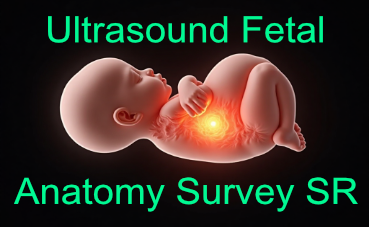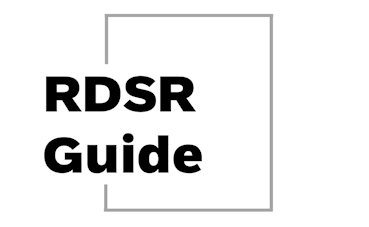
Sup249
Ultrasound Fetal Anatomy Survey SR Extensions
This supplement to the DICOM Standard introduces new SR
template content to address fetal anatomy survey
assessments in ultrasound reports.
Specifically, a sub-template is added to TID 5000 along
with corresponding CIDs to address the anatomy of interest
and assessments for each.
Clinical guidelines from the International Society of
Ultrasound in Obstetrics and Gynecology (ISUOG) call for a
survey of fetal anatomy in the first, second, and third
trimesters to identify structural anomalies.
In Japan, JSUM guidelines call for first and second
trimester anatomical surveys
The guidelines identify specific lists of anatomy to
consider.
This supplement was voted ready to be incorporated into
the standard as Final Text.
View slideset »

Sup248
DICOMWeb Send
This supplement adds the Send in DICOMweb to mirror the
Move Service that is already available in DIMSE.
The DICOMWeb Send services have been designed with the
intention of facilitating proxies from/to DIMSE.
This supplement will be further presented and
discussed in the base standard group before going
out for Public Comments.
View slideset »

Sup245
RDSR Informative Annex
This Supplement explains the creation and usage of
Radiation Dose Structured Report (traditional and
enhanced) within Angiography, Mammography, Radiography,
Radio-Fluoroscopy, CT, and Dentistry modalities. This
supplement excludes Radiopharmaceutical Radiation Dose
Structured Report and Patient Radiation Dose Structured
Report.
The content definition of the RDSR varies by modality, and
there are many different types of system configurations in
the field. This supplement provides a clear understanding
of the precise requirements for each type of device.
The purpose of this supplement can be summarized as
follows:
Give more information beyond the definitions in PS 3.16:
describe real-world scenarios of typical equipment
configurations, provide examples and encoding guidelines;
Indicate restrictions on the applicable scenarios (defined
terms, value ranges, presence of Content Items)
Assess the applicability for some conditional Content
Items under particular scenarios;
Promote usage of optional Content Items under particular
scenarios;
Explain similarities and equivalences of same information
in both traditional RDSR and enhanced RDSR. Encoding
examples of using the traditional RDSR and the enhanced
RDSR (introduced in Supplement 214), and mapping between
these two RDSRs.
This supplement will be further presented and
discussed in the base standard group before going
out for Public Comments.
View slideset »

Sup251
Application Request
This Supplement adds an updated Application Program Interface (API) to
DICOM PS3.18 and retires the previous SOAP API.
The use of this API will allow a client to request an Application to
perform work on given data.
This API was first proposed by the American College of Radiology’s
Data Science Institute (ACR DSI) and has since been extended by the
MONAI Deploy Informatics Gateway (MIG) for inference requests.
This API fills the gap in IHE’s AI Workflow for Imaging (AIW-I)
profile where a Task Performer (Proxy) communicates and exchanges
input data to perform inference and exchange results.
In the profile there are no defined transactions between the Task
Performer (Proxy) to request services from an AI Model (Proxied).
For the purposes of this supplement the Task Performer (Proxy) would
be considered a client and the AI Model (Proxied) would be an
Application.
There is no restriction on what role a client plays in the
overall workflow when using this API for requesting services of an
Application.
A client triggers an Application for execution with an Application
Processing Request.
The request provides the Application with an identifier for initial
data to be used as well as the protocols which can use to retrieve the
data referenced in the request.
Upon completion, the request specifies the protocol to be used to
store artifacts of the Applications execution.
Out of scope are all DICOM UPS-RS transactions as well as any exchange
of capabilities between a client and the Application.
This supplement will be further presented and discussed in the base
standard group before going out for Public Comments.
View slideset »

Sup252
CT Image Storage for Processing
This Supplement adds For Processing storage SOP Classes
based on the existing CT Image IOD, Enhanced CT Image IOD,
and Legacy Converted Enhanced CT Image IOD.
These SOP Classes mirror the corresponding Mammography,
Intra-Oral X-ray, and Digital X-ray SOP Classes to
facilitate the exchange and storage of images needed for
processing while distinguishing them from those for
presentation to support appropriate data pipelines and not
disrupt reading workflow.
One application of the For Processing SOP Classes is to
store and exchange CT basis images created by the
multi-energy decomposition process.
These are not typically diagnostic themselves but can be
processed to generate an extensive variety of diagnostic
images (iodine maps, virtual non-contrast images, virtual
monoenergetic images at various energy levels, calcium
maps, etc.).
Hanging Protocols would typically ignore these For
Processing images.
This supplement was voted ready to go out for Public Comment.
View slideset »